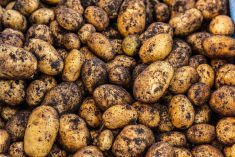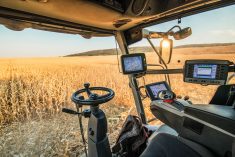Reuters / Shirt-sleeve weather across America’s central Grain Belt is tempting, but expensive seeds and worries about insurance covering any sudden cold snap have kept crop planters out of fields.
“We’ve got a lot invested in this crop. We want to be careful,” said central Illinois farmer Tim Seifert, who doesn’t want to take the chance of seeing young corn seedlings hurt by an April frost.
“At $400 a bag for seed and the chance that insurance may or may not cover a loss if the crop gets hurt, it’s not worth the risk to plant too early,” he added.
Read Also

Manitoba sclerotinia picture mixed for 2025
Variations in weather and crop development in this year’s Manitoba canola fields make blanket sclerotinia outlooks hard to pin down
But Seifert, who farms near Springfield, has been out all week applying nitrogen fertilizer to his future cornfields, taking full advantage of 27 C, clear skies and dry soils after a snowless winter.
Soil temperatures are ideal for planting corn, 50° and higher across the top corn states of Iowa and Illinois. But he usually does not plant before April 5, when his crop insurance policy activates.
Farmers like to plant corn as early as possible, as yields are generally higher in central Illinois if corn is seeded by mid-May. Yields can slip as much as a bushel an acre per day after that. Also, farmers know that the outlook for a tight corn supply before the autumn harvest this year will mean early-harvested corn will bring a hefty premium from processors and exporters competing for scarce supplies.
“There is a lot of nitrogen fertilizer going on but hopefully they aren’t thinking about planting for a month or so,” Roger Elmore, a corn extension agronomist at Iowa State University, said in an interview March 16.
“Iowa farmers should wait until the week of April 9 in the southern part of the state and April 15 for the northern half to plant. The chance of frost and snow between now and the middle of April is pretty high,” said Elmore.


















